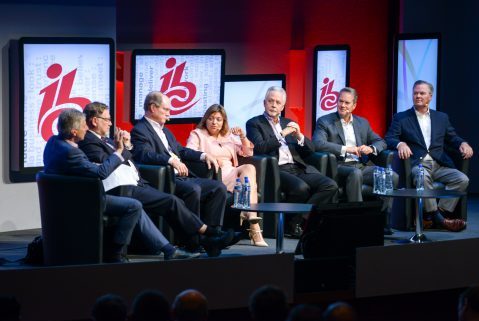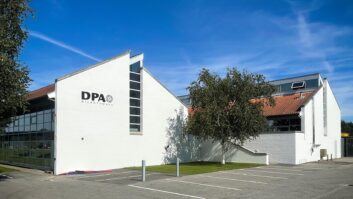
Yesterday’s IABM breakfast session was dominated by the word consolidation, and quirky research contradictions. Giving his traditional industry report, CEO Peter White started with media company performance that indicated nine per cent growth but a seven per cent decline in profits. Thankfully, 93 per cent of companies polled are profitable.
The split between traditional and non-traditional broadcast operations stands at 41 per cent to 59 per cent, but traditional will slide further to 36 per cent within two years. On the buying side the big risers are IP infrastructure, social media broadcasting and cyber security.
White suggested UHD is in the slow lane compared to AI and VR, but asked how VR will be monetised. The big stats were around the transition to IP – interoperability beingvital to 98 per cent of users, 72 per cent of whom also want best of breed.
“The quirk is the rise of internal development to 35 per cent. Maybe we are going back to bespoke in-house development,” said White. “Profit margins are not there for the new media methodologies, so we will see considerable consolidation,” he added.
Avid Technology president Jeff Rosica highlighted opposing views in the report. He said: “On the one hand it was all about efficiency and cost reductions, but on the other it was best of breed and interoperability, but this is hard for technology companies who can’t get agreement on IP and HDR standards. That just makes it more expensive for us.
“Our customer base is struggling with 1,800 vendors in a relatively small industry. $50 billion is just a Monday at Microsoft,” he added.
Charlie Vogt, CEO at Imagine, said: “Our industry is getting ready to go through a bit of a revolution. We have been trying to figure out how we consolidate around a customer base that is consolidating around us.”
A hundred key customers have become 20, which has put a lot of strain on suppliers. Chris Wagner, executive VP, market strategy with Neulion, said: “I did not see much in the report about what’s actually driving all this – the smartphone.
That has the ability to deliver high-quality video, and you add into that the consumer’s preferences for personalising experiences.
“That is driving a lot of multi-screen and the repackaging of content, and it is driving a lot of choice for consumers to pick and buy the things they prefer.”







